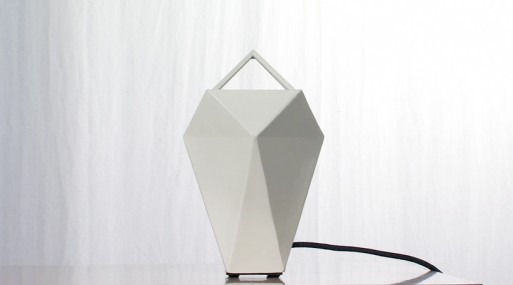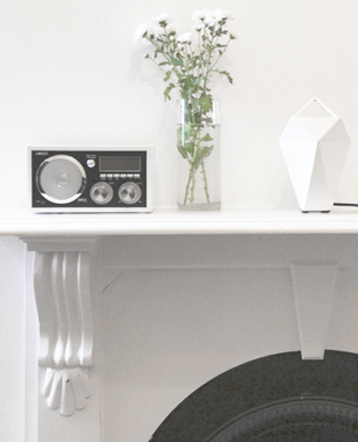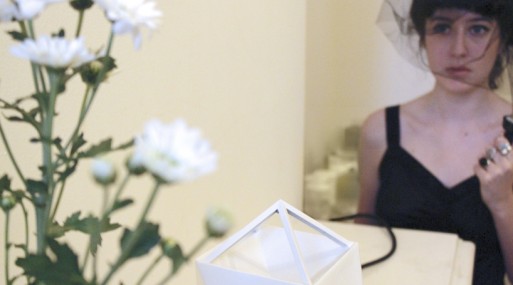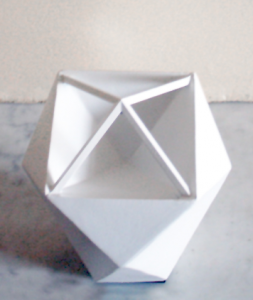“It is important for digital objects to go beyond the superficial,” explains Australian Laura Blue. She is referring to her creation of a contemporary vessel for ashes she called “Aerial Urn.” “Contemplating mortality is essential in defining life,” she explains, “while technology is key in defining contemporary culture.” Why not let these two realities inform the creative process of making an urn for the year 2014? There is no reason why the technological innovations that pervade so many aspects of our lives can’t also have a positive influence on the way we embrace death and dying and “Aerial Urn creates a technologically and scientifically valid spectral presence.”
Aerial Urn is a simple, handsome home object: with a white slip-cast ceramic exterior and a geometric design, it’s easy to envision it in your home (it looks like it rolled right out of CB2). You could call it the “non-urn urn” due to its decidedly unfussy, un-antiquated appeal. It wants to bring the notions of death and dying into a more modern and less “taboo” framework.
A mission to move towards the contemporary combined with an integration of today’s technology? It all sounds very exciting. But how does it all come together? What exactly is the technology she employs, and what on earth does it mean for an urn to have a “scientifically valid spectral presence” ?
She explains how Aerial Urn used technology to create a unique memorial object:
After the death of a loved one, the bereaved may choose to commemorate the deceased with an Aerial Urn. To do this, a hair sample from the deceased is sent to have whole genome sequencing performed, and an Aerial Urn is purchased. The whole genome data is then sent to the remote server service, who transform the letters of the person’s DNA sequence into a series of musical tones. ‘A’ becomes a middle ‘A’ note, ‘C’ becomes ‘C’, ‘G’ becomes ‘G’, and ‘T’ becomes a high ‘F’ note.
Essentially, your loved one will become music to your ears:
The device connects wirelessly to the Internet to receive this data, then the unique series of notes derived from DNA is sent live from the remote device as an FM radio signal. This creates an invisible, intangible field of electromagnetic waves with a diameter of several meters. The wireless signal, though invisible and intangible, pulses through the domestic space and the bodies of its inhabitants.
Therefore, the DNA of the deceased exists in an intangible form within the home. The bereaved may choose to tune into the FM signal with a regular, domestic FM radio to hear a rapid, seemingly random and never-ending series of musical tones.
It’s a complicated but exciting venture — and most importantly, it makes for lively discussion on what the current end-of-life options are. The Aerial Urn provides easy, active means for surviving family members to celebrate the life of their loved one (who just has to hope that their DNA sequence song rocks).
What do you think of Aerial Urn? We look forward to your comments below.
You may enjoy:
- Life & Death Silhouetted: Design Boom’s “Portrait Urn”
- “Family Tree” Design Integrates SMS Technology with Urns
- An Urn for Cremation Burials in Water

 Aerial Urn: The End-of-Life Vessel That’s Music to Your Ears
Aerial Urn: The End-of-Life Vessel That’s Music to Your Ears






 “Help Me, Helen”
“Help Me, Helen”
 Recovering Cremation Remains After the Los Angeles Fires
Recovering Cremation Remains After the Los Angeles Fires
 “As Tears Go By” by Marianne Faithfull
“As Tears Go By” by Marianne Faithfull














